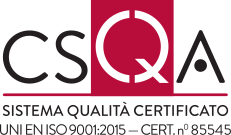
In Brussels, on the 22nd November, took place the joint 2nd Stakeholders Engagement Workshop between the two European projects - PRAETORIAN and PRECINCT - concerning the security enhanchement of critical infrastructures.
The workshop was a moment of reflection about the standardisation of procedures involving preparation and response to situations of crisis, focusing on densely populated areas. Lepida was invited to contribute to this topic, in order to develop a reflection that would go beyond the verticalization of the preparation and the response in telecommunications critical structures.
The topics were developed starting from the lately uprising debate about an apparently loosely related topic, namely the treatment of critical data. In particular, keeping in mind how Europe was a pioneer in this sector, with a regulamentation that identified a common policy as far as the critical infrastructures (EPCIP) were concerned.
This kind of approach is having its most recent concretisation in the current Chinese regulamentation about the treatment of information concerning critical infrastructures, which deems these at the same level as the personal data of a physical person. In these last few years Europe is reflecting about the possible perspectives to bring back attention to the importance of the individuation of structurally relevant sectors and of defence policies of the infrastructures of these sectors.
It is necessary to understand the complete panorama of crisis response, not only in the informatic field, on which Europe strongly focused lately, through the new NIS directive, and the upcoming NIS-2.
Lepida highlighted that thanks to the first year of working at the project it has been acquired the awareness of how the vocation to “taxonomic” description of data structures (particularly with the INSPIRE directive) keeps on being the ground on which to build a joint action among operators, consumers and processes of data fluxes. Data that are harvested by the infrastructures operators for the benefit of both the system and the supervised infrastructure.



